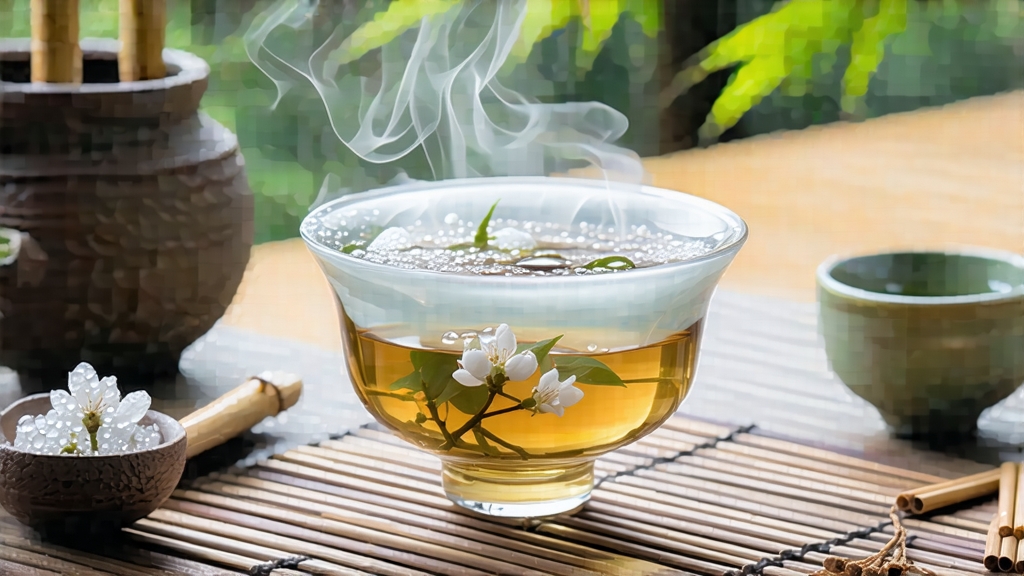
Silver Needle—Bai Hao Yin Zhen in Mandarin—occupies the summit of China’s white-tea pantheon. International drinkers often meet it first through glossy café menus that promise “the champagne of teas,” yet the leaf’s real story is older, quieter, and rooted in the coastal hills of Fujian Province. To understand why emperors once taxed it as silver and why modern sommeliers weigh it like gold, one must follow the tea from misty garden to glass, pausing at every turn where climate, craft, and culture converge.
Historical whispers place the birth of white tea during the Song dynasty (960-1279), when imperial tribute lists first recorded “white tablets” pressed from wild buds. Those cakes have vanished, but the Song appetite for delicate downy tips foreshadowed what would emerge six centuries later in Fuding and Zhenghe counties. By the late Qing, growers learned to wither and dry the buds without pressing them, creating the loose, feather-light Silver Needle we recognise today. Early British plant hunters who sneaked cuttings out of Fujian in the 1840s noted the tea’s “silvery floss” and “hay-sweet breath,” yet failed to replicate its flavour in Darjeeling; the magic, they discovered, refuses to travel far from its native terroir.
True Silver Needle is picked only in early spring, when the air still carries winter’s chill and the tea bushes awaken from dormancy. Pluckers seek the standard known as “one flag, one shoot”: a single unopened bud sheathed in two tiny leaves no longer than the tip of a little finger. The ideal hour is dawn, before sunrise reddens the leaf edge and converts stored sugars into harsher tannins. Experienced hands work without fingernails, rolling each bud gently into wicker baskets lined with bamboo cloth to prevent bruising. On an average day a skilled picker gathers barely half a kilogram of fresh material; five kilograms are needed to yield one kilogram of finished tea, which partly explains the price that rivals first-flush Darjeeling.
Once in the factory, the buds undergo the simplest yet most precarious of all tea crafts: pure withering. No pan-firing, no rolling, no oxidation flip-flops—just air, time, and the tea master’s intuition. Traditionally the buds are laid on bamboo trays stacked like screens in a quiet loft where windows are cracked to invite mountain breezes. For thirty-six to forty-eight hours the tea rests, losing moisture in slow motion while enzymes whisper away grassy harshness and coax out white-tea signature notes of honeydew, cucumber skin, and fresh alfalfa. The final moisture target hovers around 8–9 percent; exceed it and the tea will sour in storage, drop below and the buds turn brittle, shedding their protective down. When the master judges the leaf “sweet enough to bite,” the trays slide into a low-temperature dryer—never hotter than 40 °C—to lock the flavour. The result is a tea that looks almost alive: needles of pale jade frosted with microscopic hairs that catch light like moonlit frost.
Regional styles diverge subtly. Fuding Silver Needle tends toward plush, orchid-like fragrance and a cream-weight liquor; Zhenghe versions show sharper, pine-nut aromatics and a brighter, citrine cup. Purists debate which is canonical, but both qualify for China’s Protected Geographical Indication, so long as the raw buds hail from Da Bai or Da Hao cultivars—bushes bred over centuries for oversized buds and downy density. Attempts to make Silver Needle from Yunnan big-leaf assamica yield a pleasant drink, yet lacks the Fujian tea’s kinetic lift and cooling finish.
Storage is integral to quality. Unlike green tea that fades quickly, Silver Needle mellows gracefully if kept cool, dry, and away from odours. Connoisseurs speak of “three ages”: the youthful snap of new season tea, the rounded biscuity calm that arrives after two years, and the deep medicinal sweetness that can emerge after five or more. Aged white teas have become a speculative market in China, with cakes of 2012 Fuding Silver Needle fetching prices once reserved for pu-erh. Western drinkers need not chase investment lots; even a nine-month-old harvest can deliver the quintessential white-tea epiphany if stored in an opaque tin inside a refrigerator door.
Brew